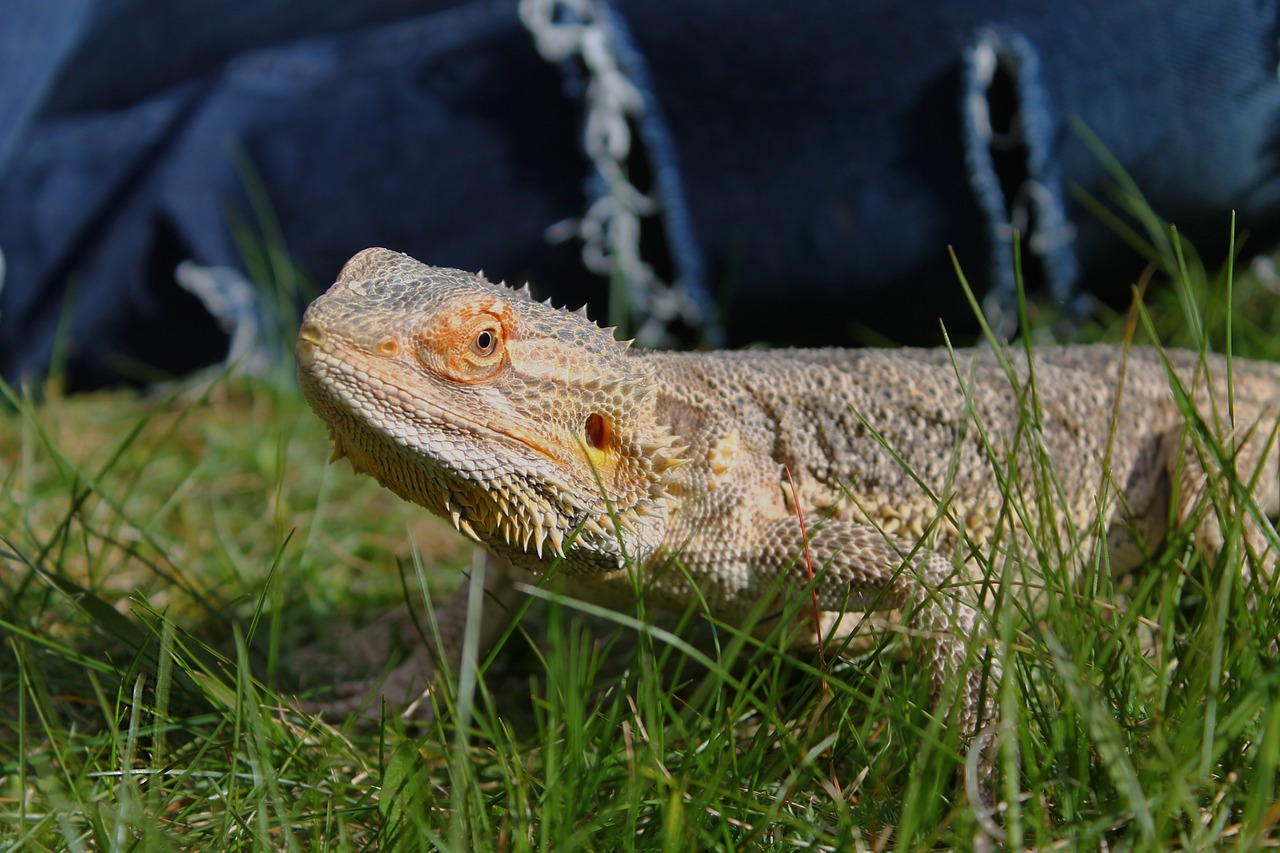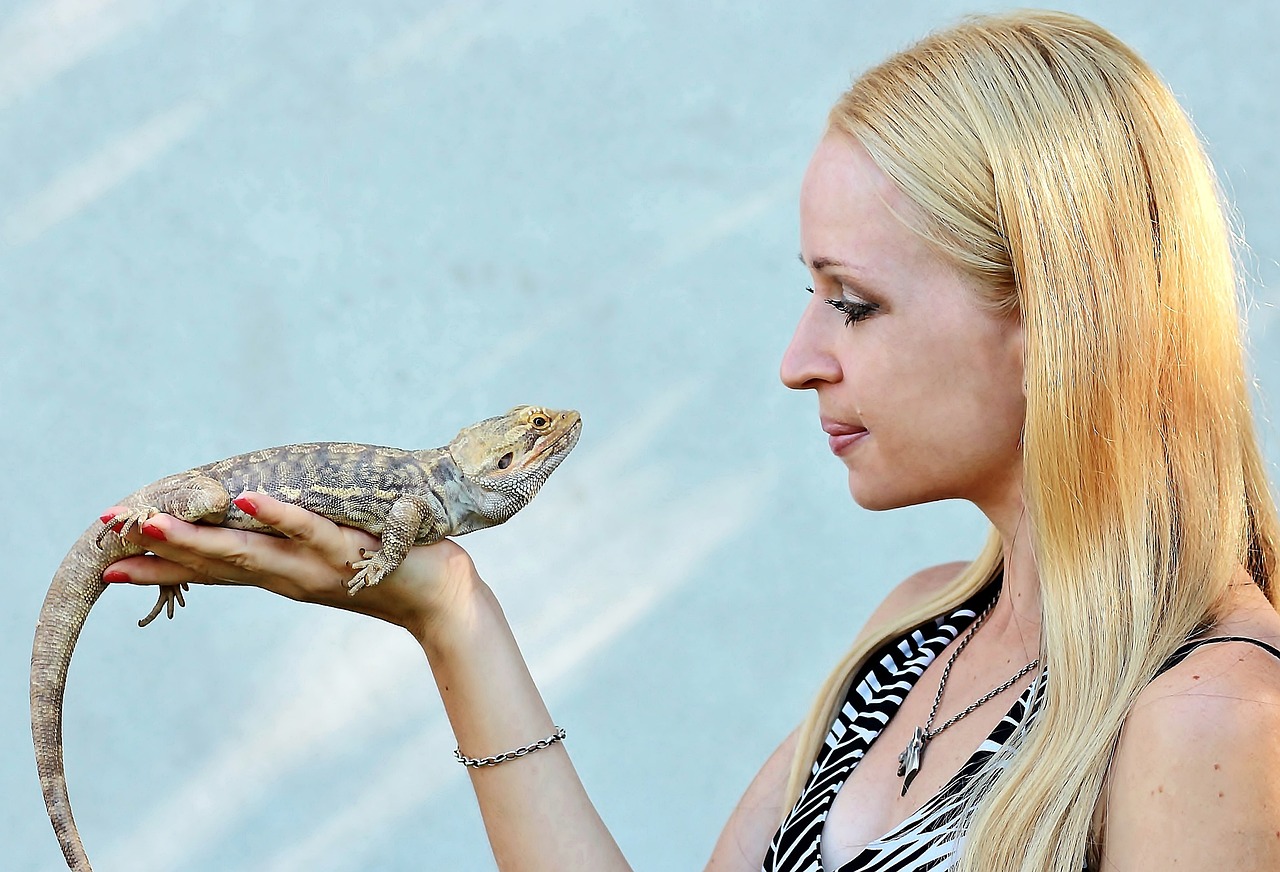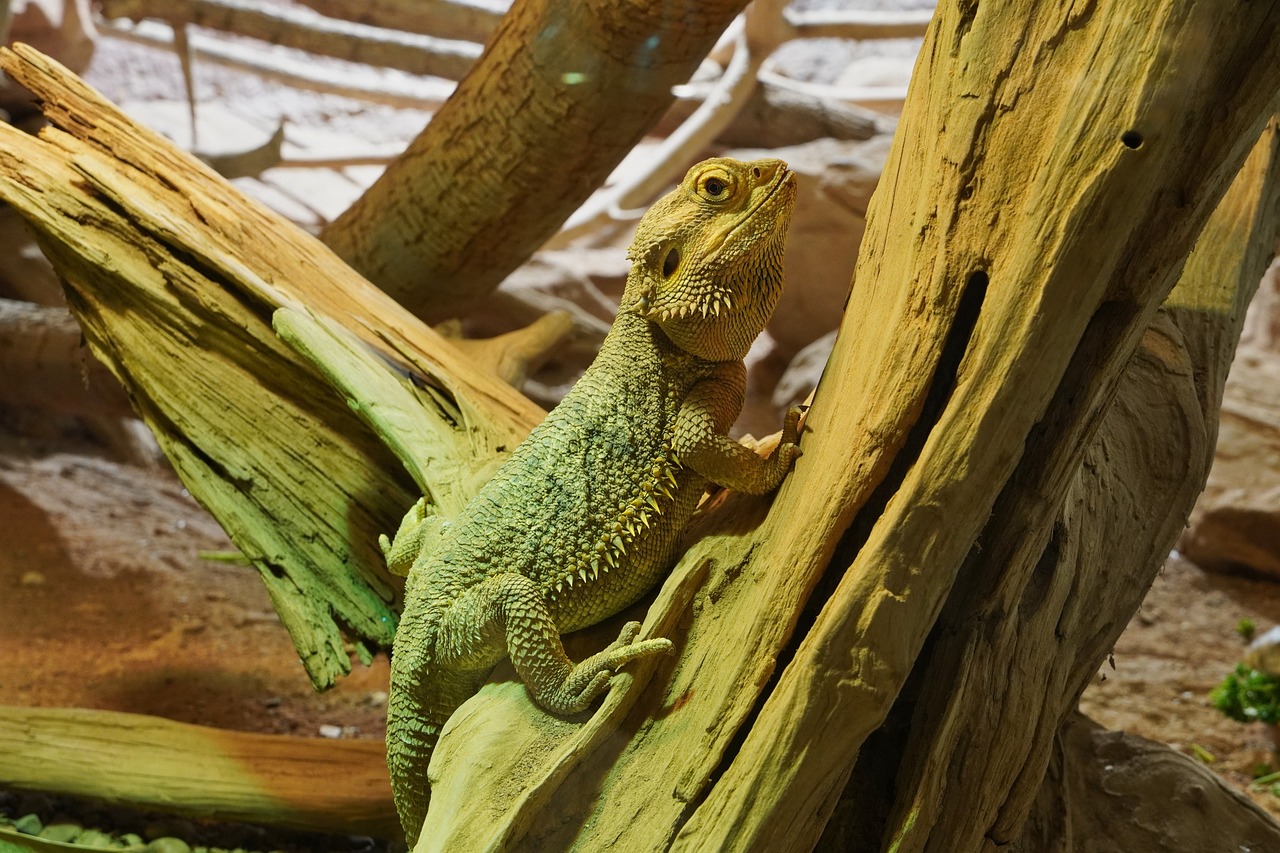Bearded Dragons and the Phenomenon of Glass Surfing
The bearded dragon, scientifically known as Pogona vitticeps, are among the most popular reptilian pets worldwide. Native to the arid and semi-arid regions of Australia, these fascinating creatures have won the hearts of reptile enthusiasts due to their docile nature, manageable size, and relatively simple care requirements. However, like all pets, they present unique challenges, one of which is the phenomenon known as “glass surfing.”
Glass surfing, also referred to as glass dancing, is when a bearded dragon repeatedly runs along the glass walls of its enclosure, often scratching or pawing at the glass. This behavior, while not immediately harmful, is a sign of distress or dissatisfaction in the bearded dragon’s environment. Understanding and addressing the causes of glass surfing is crucial for the well-being of these reptiles.
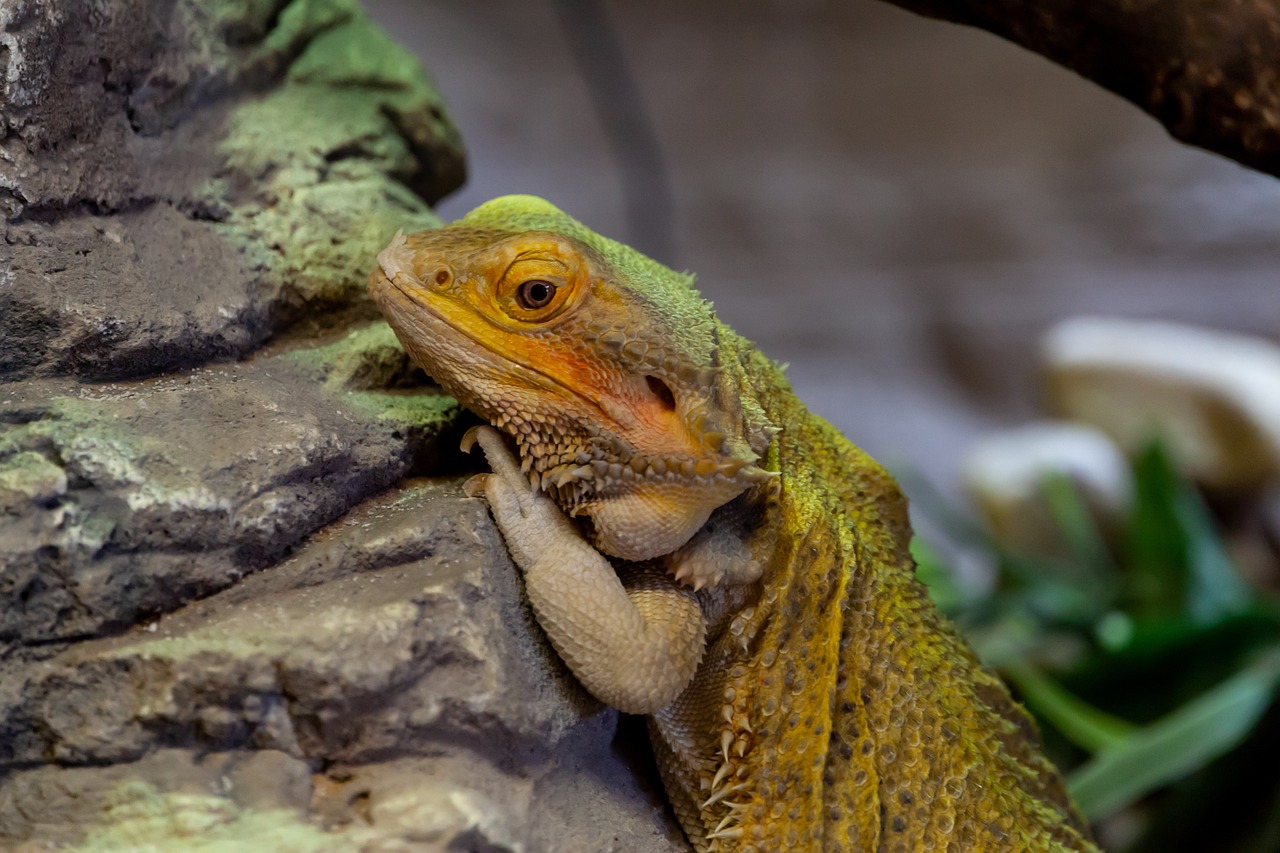
The Natural Habitat of Bearded Dragons
To understand why bearded dragons might exhibit glass surfing behavior, it’s essential to first understand their natural habitat. In the wild, bearded dragons inhabit various environments ranging from deserts to dry forests and scrublands. These regions are characterized by:
- High Temperatures: Bearded dragons are ectothermic, relying on external heat sources to regulate their body temperature. The temperatures in their natural habitat often range from 75°F (24°C) to 105°F (40°C) during the day, with a significant drop at night.
- Low Humidity: The arid regions have low humidity levels, typically between 20% to 40%. High humidity can lead to respiratory problems in bearded dragons.
- Basking Spots: Bearded dragons require access to basking spots where they can absorb UVB rays, crucial for their metabolism and overall health.
- Varied Terrain: Their environment includes rocks, branches, and open spaces, allowing for climbing, exploring, and basking.
- Sparse Vegetation: The vegetation is minimal but provides occasional cover and a varied diet of insects and plants.
In captivity, replicating these conditions as closely as possible is vital to prevent stress-related behaviors like glass surfing.
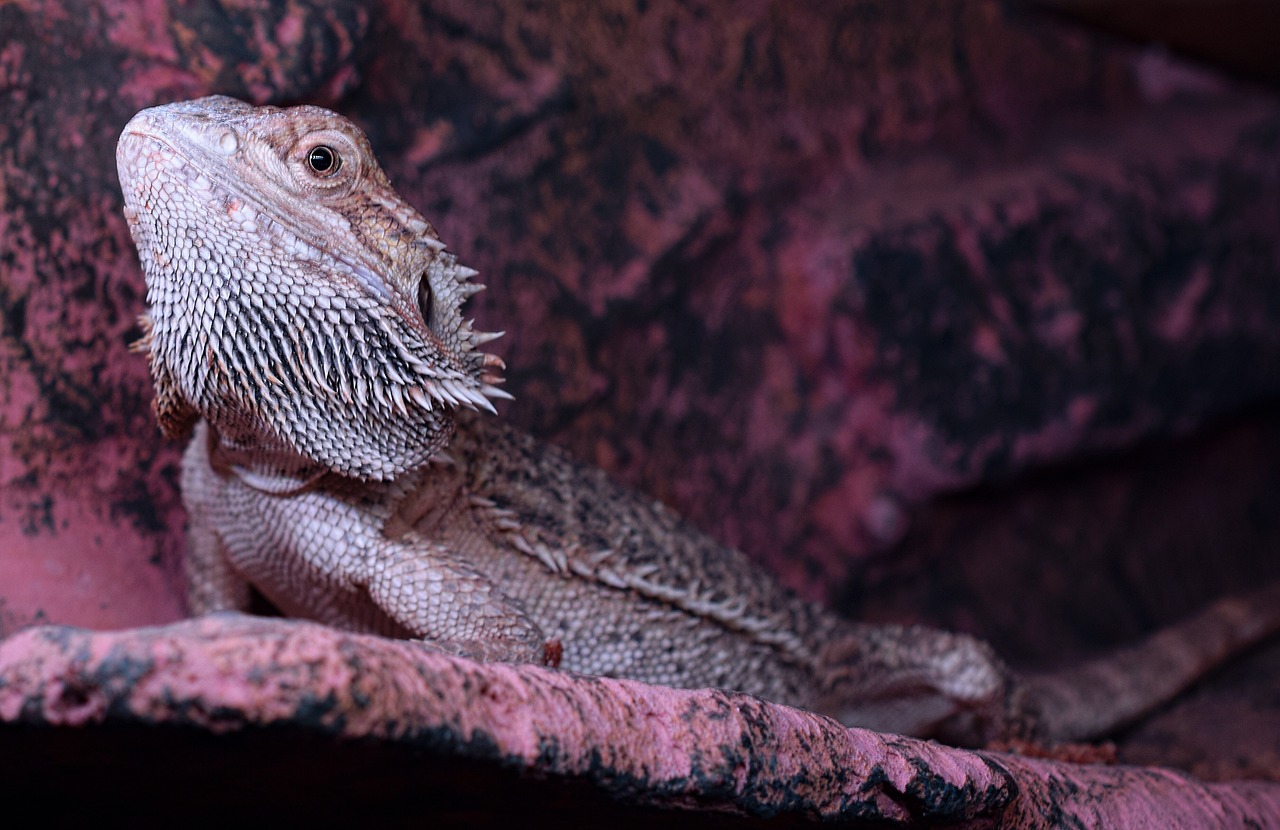
Glass Surfing: Definition and Signs
Glass surfing is a repetitive behavior where a bearded dragon tries to climb or run along the glass walls of its enclosure. This behavior is often accompanied by:
- Pawing or Scratching at the Glass: The bearded dragon will use its front limbs to scratch or paw at the glass as if trying to escape.
- Sliding Belly Along the Glass: In an attempt to climb, the bearded dragon may slide its belly along the surface.
- Persistent Activity: Unlike occasional curiosity, glass surfing is a persistent and repetitive behavior that continues over extended periods.
Causes of Glass Surfing
Several factors can contribute to glass surfing in bearded dragons, each related to their environmental or psychological needs. Understanding these causes is the first step in addressing the behavior.
1. Inadequate Enclosure Size
One of the most common reasons for glass surfing is an enclosure that is too small. Bearded dragons require ample space to move around, explore, and exhibit natural behaviors. An enclosure that is too small can lead to feelings of confinement and frustration.
Recommended Enclosure Sizes:
- Juveniles (up to 6 months): At least 20-gallon tank (30 inches x 12 inches x 12 inches).
- Sub-adults (6-12 months): At least 40-gallon tank (36 inches x 18 inches x 18 inches).
- Adults (over 12 months): At least 75-120 gallon tank (48 inches x 24 inches x 24 inches).
2. Improper Temperature Gradient
Bearded dragons require a proper temperature gradient in their enclosure to thermoregulate effectively. The enclosure should have a hot side with basking spots and a cooler side. If the temperature gradient is not correctly maintained, the bearded dragon may become stressed and exhibit glass surfing behavior.
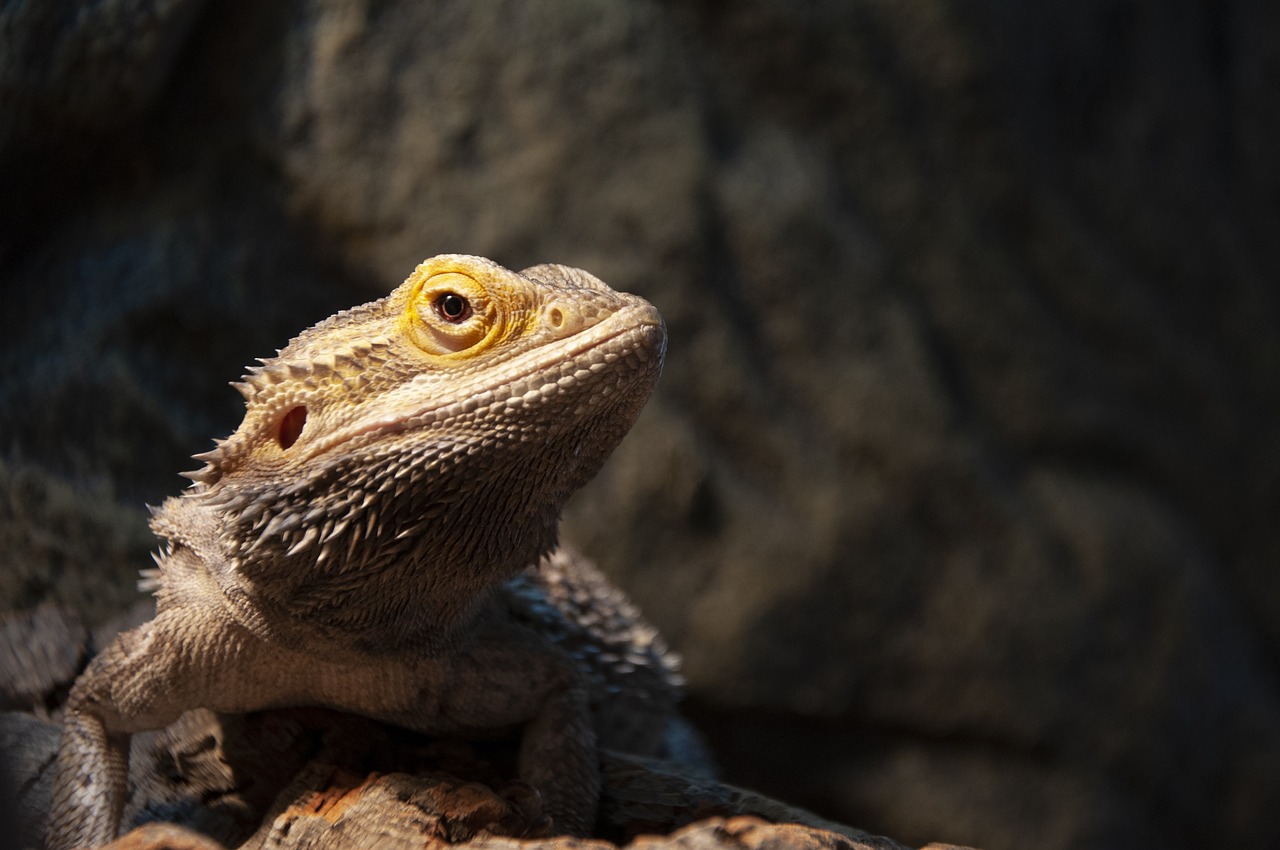
Recommended Temperature Ranges:
- Basking spot: 95°F – 105°F (35°C – 40°C)
- Cool side: 75°F – 85°F (24°C – 29°C)
- Night temperature: 70°F – 75°F (21°C – 24°C)
3. Lack of Hiding Spots and Enrichment
Bearded dragons need hiding spots and environmental enrichment to feel secure and stimulated. Without adequate hiding spots and items to explore, such as rocks, branches, and climbing structures, bearded dragons may become stressed and start glass surfing.
4. Reflections and Visual Stimuli
Bearded dragons can be confused or stressed by their reflection in the glass walls of their enclosure. They may perceive their reflection as another dragon, leading to territorial or competitive behavior. Additionally, visual stimuli outside the enclosure, such as other pets, human activity, or bright lights, can contribute to stress and glass surfing.
5. Hunger or Dietary Issues
A bearded dragon that is hungry or not receiving a balanced diet may exhibit glass surfing behavior as a sign of dissatisfaction or discomfort. Ensuring a proper diet of live insects, vegetables, and occasional fruits is essential.
Recommended Diet:
- Juveniles: Primarily insects (e.g., crickets, dubia roaches) with some vegetables.
- Adults: A balanced diet of 70-80% vegetables and 20-30% insects.
6. Illness or Discomfort
Health issues, such as parasites, impaction, or other illnesses, can cause discomfort and stress, leading to glass surfing. Regular veterinary check-ups and monitoring for signs of illness are crucial.
Addressing Glass Surfing

Once the potential causes of glass surfing are identified, the next step is to address them through appropriate interventions.
1. Enclosure Upgrades
Ensure that the enclosure is appropriately sized for the bearded dragon’s age and size. Upgrading to a larger tank can provide more space for movement and reduce feelings of confinement. Adding multiple levels or platforms can also increase the usable space within the enclosure.
2. Temperature and Lighting Adjustments
Maintain a proper temperature gradient within the enclosure. Use high-quality thermometers to monitor temperatures accurately. Ensure that the basking spot provides sufficient UVB exposure, which is crucial for calcium metabolism and overall health.
3. Environmental Enrichment
Provide hiding spots, climbing structures, and other forms of enrichment to stimulate the bearded dragon’s natural behaviors. This can include:
- Rocks and logs for climbing and basking.
- Plants (real or artificial) for visual and environmental enrichment.
- Hiding spots such as caves or commercial reptile hides.
4. Minimizing Reflections and External Stimuli
Reduce reflections on the glass by placing opaque backgrounds or decorations on the sides and back of the enclosure. Position the enclosure in a low-traffic area to minimize external visual stimuli. Covering the sides of the tank with paper or decorations can also help reduce reflections and create a more secure environment.
5. Proper Diet and Feeding Schedule
Ensure that the bearded dragon receives a balanced diet appropriate for its age. Provide a variety of insects, vegetables, and occasional fruits. Dusting insects with calcium and vitamin supplements is essential to prevent nutritional deficiencies.
6. Regular Health Check-ups
Schedule regular veterinary check-ups to monitor the bearded dragon’s health and address any potential issues early. Be observant for signs of illness, such as changes in appetite, weight loss, lethargy, or abnormal stool.
Behavioral Considerations

Understanding the natural behaviors and needs of bearded dragons is crucial for preventing stress-related behaviors like glass surfing.
1. Territorial and Social Behavior
Bearded dragons are solitary animals in the wild, often occupying large territories. In captivity, housing multiple dragons in the same enclosure can lead to stress, aggression, and glass surfing. It is generally recommended to house bearded dragons separately to prevent territorial disputes and ensure individual well-being.
2. Seasonal Changes
Bearded dragons may exhibit seasonal behaviors related to brumation (a period of dormancy similar to hibernation). During brumation, a bearded dragon’s activity level decreases, and it may eat less. Understanding and accommodating these natural cycles can prevent unnecessary stress and behavior issues.
3. Handling and Interaction
While bearded dragons can become accustomed to handling, excessive or improper handling can cause stress. It’s essential to handle them gently and provide opportunities for rest and retreat. Consistent and gentle interaction can help build trust and reduce stress-related behaviors.
Case Studies and Observations

Examining specific cases of bearded dragons exhibiting glass surfing can provide insights into the underlying causes and effective interventions.
Case Study 1: “Spike”
Background: Spike, a 2-year-old male bearded dragon, began exhibiting glass surfing behavior shortly after being moved to a new enclosure.
Intervention: The owner identified several potential stressors:
- The new enclosure was placed in a high-traffic area with frequent human activity.
- Reflections on the glass walls were causing Spike to perceive his reflection as another dragon.
Solution:
- The enclosure was relocated to a quieter area with fewer disturbances.
- Opaque backgrounds were added to the sides and back of the enclosure to reduce reflections.
- Additional hiding spots and climbing structures were introduced to provide environmental enrichment.
Outcome: Spike’s glass surfing behavior significantly decreased within a week, and he became more active and relaxed in his new environment.
Case Study 2: “Luna”
Background: Luna, a 6-month-old female bearded dragon, exhibited persistent glass surfing despite having a well-maintained enclosure.
Intervention: The owner conducted a thorough assessment of Luna’s environment and health:
- The enclosure size and temperature gradient were appropriate.
- Luna’s diet was balanced, and she showed no signs of illness.
Solution:
- The owner introduced more environmental enrichment, including rocks, logs, and a variety of climbing structures.
- Luna’s feeding schedule was adjusted to include more frequent, smaller meals to prevent hunger-related stress.
Outcome: Luna’s glass surfing behavior gradually decreased as she engaged more with the new enrichment items and adjusted to the revised feeding schedule.
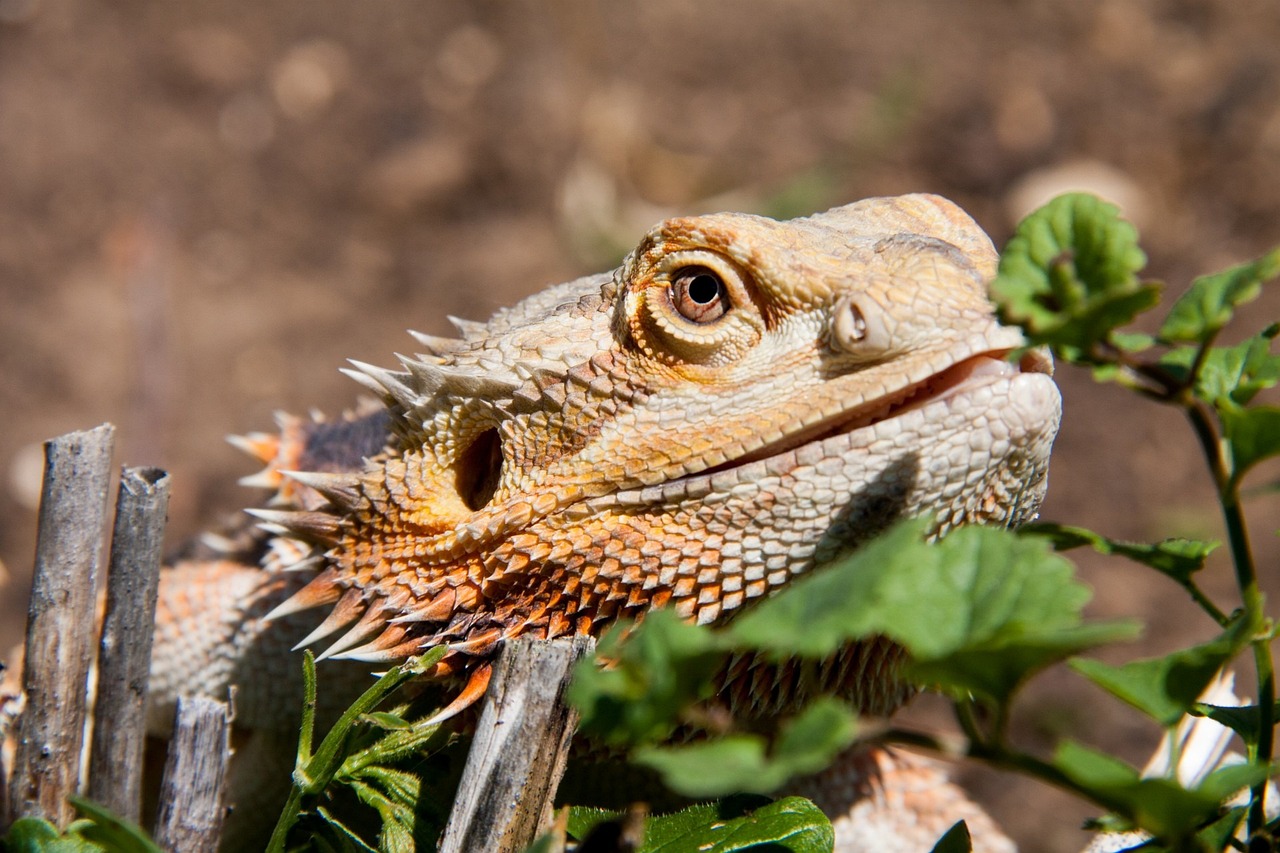
Conclusion
Glass surfing in bearded dragons is a multifaceted behavior often indicative of underlying environmental or psychological stressors. By understanding the natural habitat and behaviors of bearded dragons, owners can create an environment that meets their needs and prevents stress-related behaviors.
Addressing the common causes of glass surfing, such as inadequate enclosure size, improper temperature gradients, lack of enrichment, reflections, dietary issues, and health problems, is essential for the well-being of these reptiles. Through thoughtful interventions and regular monitoring, bearded dragon owners can ensure their pets lead healthy, stress-free lives.
In conclusion, the phenomenon of glass surfing serves as a reminder of the importance of providing optimal care for bearded dragons. By continually assessing and adjusting their environment and care practices, owners can foster a positive and enriching habitat for their beloved reptilian companion.
